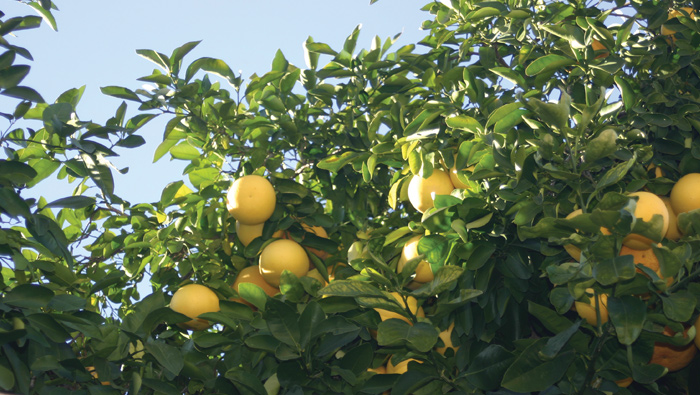Tu B’Shevat falls on Jan. 25 this year. The day is known as the New Year for Trees since it is the date used to calculate a tree’s age for tithing purposes.
In Israel this is the season when the earliest blooming plants slowly awake from winter slumber and begin a new fruit-bearing cycle.
And while blooming in January may seem far-fetched on a chilly January day in Arizona, experts tell us that in the low deserts around Phoenix and Tucson, January is a great time to plant fruit trees … and maybe even eat some fruit.
“One of the best things about living in the Arizona desert is that some citrus varieties are ripe and ready to eat in January,” says Kelly Murray Young, assistant extension agent in agroecology for The University of Arizona’s Maricopa County Cooperative Extension. Kelly teaches, oversees the Master Gardener program, works with commercial landscapers, and teaches and coordinates the Small Farmers Program.
This timing is perfect, as it is traditional, to celebrate Tu B’Shevat by eating fruit.
“Oranges, tangerines and lemons are usually ready, while grapefruit continues to sweeten throughout the spring,” says Kelly. “The only way to know if citrus is ripe is to taste it.”
It is a good time to plant bare-root deciduous fruit and nut trees such as apple, peach and pecan, as well as bare-root berries such as grapes and blackberries.
“Citrus can also be planted at this time,” she adds.
You also can continue to plant cool-season vegetables in January, including lettuce, spinach, radishes and mustard greens.
But while you’re looking forward to planting, and eating, in that January garden, make sure you’re protecting your current investment.
“Cold temperatures in January can damage frost-sensitive plants,” says Kelly. “Tropical plants such as bougainvillea, hibiscus and lantana are particularly vulnerable.”
She has a few tips for caring for plants in January:
- Cover plants like bougainvillea, hibiscus and
lantana with a “frost cloth” at night. - Bring potted cacti and other tropical plants
indoors at night. - Be sure to remove cloths, or put plants back outdoors,
once the morning temperatures have climbed to allow
plants access to adequate sunlight. - Avoid pruning plants that were previously damaged by
cold weather until no more frosty nights are anticipated.
“Pruning stimulates new growth in plants. If the plants produce a new flush of growth that is vulnerable to freezing, the plant may be very slow to recover or die altogether,” says Kelly.
So while many parts of the country may still be under a blanket of snow, Arizona gardeners can actually celebrate Tu B’Shevat by getting outside with nature.
“It’s a great time of year to garden,” says Kelly. “There are some beautiful balmy days. This is one reason why we live in the desert: January.”
Faith Schwartz has a bachelor’s degree in journalism and writes for the The University of Arizona College of Agriculture and Life Sciences Cooperative Extension.






